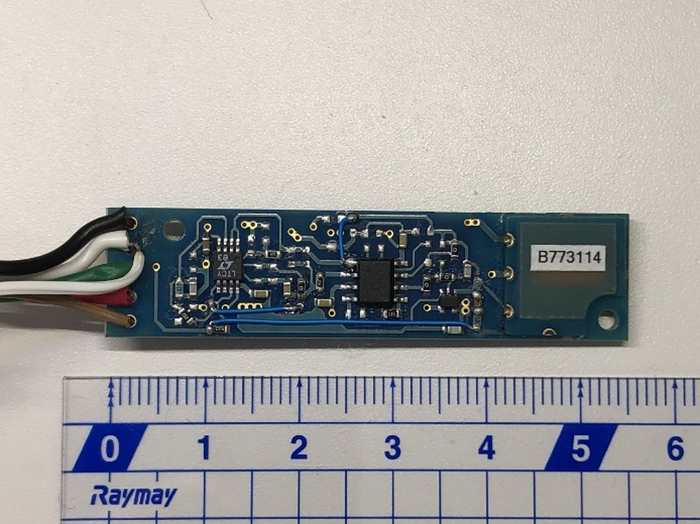
An electric circuit board of the MI sensor. Image Credit: Masahito Nosé
As geomagnetic fluctuations are linked to phenomena occurring in outer space, scientists in upper atmospheric physics and space physics could utilize the MIM to identify the status of space from the ground without the use of satellites. They reported the study outcomes in the Journal of Geophysical Research: Space Physics.
Even though people frequently tend to imagine space to be a vacuum, it is filled with space plasma, comprised of charged particles kept in hot gas. When such particles tend to communicate with the magnetic field of the Earth, they result in “space weather” effects, like space auroras or geomagnetic storms that can impact space stations, astronauts, and satellites.
Despite the significance of tracking space weather, it is hard for a device to stay in space and constantly track the space environment. At the same time, environmental changes that take place in space could be noted from the ground since they are sent as electromagnetic waves together with the magnetic field of the Earth.
Unluckily, standard methods for making these observations have battled since it is essential to capture weak magnetic field fluctuations, frequently a fraction of the size of the magnetic field of the Earth.
Associate Professor Nosé of ISEE, in partnership with Aichi Steel Corporation, has come up with an affordable system to quantify the Earth’s magnetic field with the help of the magneto-impedance (MI) effect, which was discovered in 1993 at Nagoya University.
Even though the Aichi Steel Corporation sensor originally quantified just the AC components of the geomagnetic field, the scientists enforced a magnetic-flux locked loop circuit in the MI sensor to stretch the measurement range.
The newly developed MIM is ideal for observations of phenomena like storms produced by an improvement of the solar wind’s long-lasting geomagnetic pulsations and dynamic pressure.
Also, it is power efficient, lightweight, and comparatively affordable. This must make it simpler to build a multi-point observation network. This could expedite space weather research and space environment monitoring.
Nosé established the MIM for a month of constant observation at the Mineyama observatory for experimental field observations next to Kyoto, Japan. Even though weak geomagnetic fluctuations are hard to capture, he determined those nearly 1/100,000th the size of the magnetic field of the Earth.
Various phenomena that occur in space are transmitted as electromagnetic waves in a plasma along the magnetic field of the Earth, causing weak geomagnetic fluctuations on the ground. Therefore, using the magnetic sensor developed in this research, it is possible to investigate phenomena occurring in space without leaving the ground.
Masahito Nosé, Study Lead Author, Nagoya University
Nosé added, “These geomagnetic fluctuations reflect the electromagnetic energy in space that is related to phenomena such as the generation of auroras and the weight and density of plasma in space. We expect that detailed analysis will lead to the development of real-time monitoring of the space environment and the advancement of space weather research.”
This study was financially supported by the Japan Society for the Promotion of Science (JSPS), Grant-in-Aid for Scientific Research (B) (21H01147), Challenging Research (Pioneering) (Grant 17K18804), and Grant-in-Aid for Specially Promoted Research (Grant 16H06286) as well as Ito Kagaku Shinkou Kai and Yamada Science Foundation.
Journal Reference:
Nose, M., et al. (2022) Application of Magneto-Impedance (MI) Sensor to Geomagnetic Field Measurements. JGR Space Physics. doi.org/10.1029/2022JA030809.